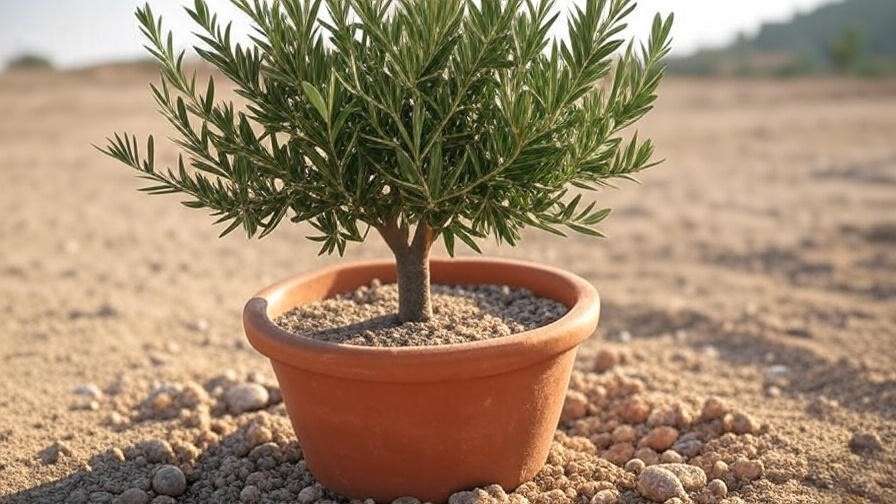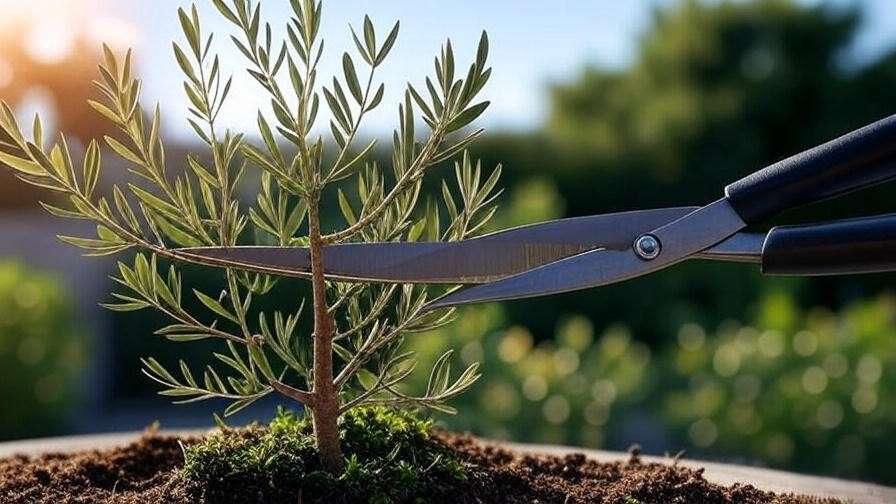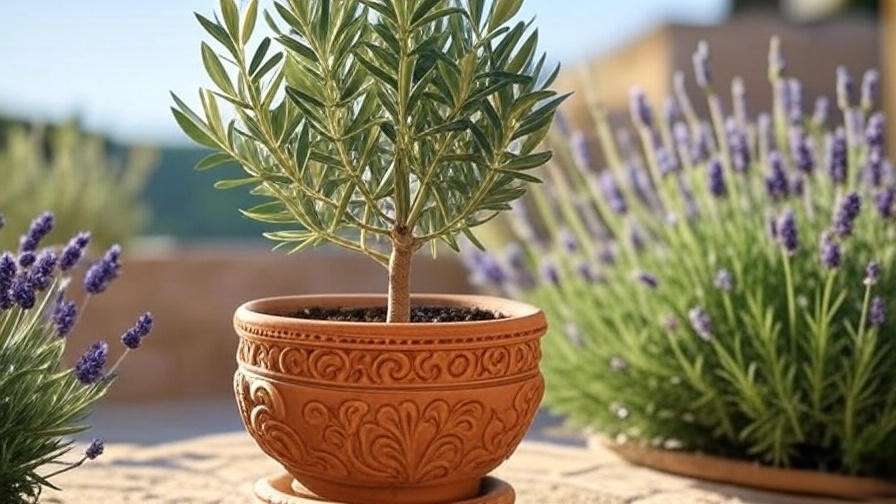Imagine transforming your patio or garden with a stunning, low-maintenance plant that brings Mediterranean charm to your doorstep! The Little Ollie olive tree (Olea europaea ‘Montra’) is the perfect choice for plant lovers seeking a compact, evergreen beauty that thrives with minimal fuss. Whether you’re a beginner gardener or a seasoned horticulturist, this dwarf olive tree offers versatility, aesthetic appeal, and a touch of timeless elegance. In this comprehensive guide, we’ll walk you through everything you need to know to grow and care for your Little Ollie olive tree, from planting to pruning, ensuring it flourishes in your space. Backed by decades of horticultural expertise and practical experience with dwarf olive varieties, this article delivers actionable tips to help your Little Ollie thrive. Let’s dive into the world of dwarf olives and unlock their full potential! 🫒
What Is a Little Ollie Olive Tree? 🫒
Overview and Characteristics
The Little Ollie olive tree, scientifically known as Olea europaea ‘Montra,’ is a non-fruiting, dwarf cultivar of the traditional olive tree. Unlike its larger cousins, this compact variety grows to a manageable height of 3-6 feet, making it ideal for small spaces. Its silvery-green, elongated leaves create a dense, lush canopy, giving it a refined, Mediterranean vibe. As an evergreen, it retains its foliage year-round, providing consistent beauty. Native to Mediterranean regions, the Little Ollie is hardy, adaptable, and thrives in warm, sunny climates.

Why Choose a Little Ollie?
Why is the Little Ollie a favorite among gardeners? Its low-maintenance nature and drought tolerance make it perfect for busy plant enthusiasts. Unlike fruiting olive trees, it produces no messy olives, making it a clean choice for patios, walkways, or indoor settings. Its versatility shines in various uses: as a neatly trimmed hedge, a sculptural topiary, a container plant, or even an indoor accent. Whether you’re designing a modern landscape or adding greenery to a cozy apartment, the Little Ollie delivers effortless charm.
Expert Insight: “The Little Ollie is a landscaper’s dream,” says Dr. Maria Gonzales, a horticulturist with 20 years of experience in Mediterranean plants. “Its compact size and adaptability make it a standout for both aesthetic and practical purposes.”
Ideal Growing Conditions for Little Ollie Olive Trees ☀️
Light Requirements
To thrive, Little Ollie olive trees crave full sun, requiring at least 6 hours of direct sunlight daily. This mimics their native Mediterranean environment, where they bask in intense sunlight. For outdoor plants, choose a spot with unobstructed sun exposure. Indoors, place your Little Ollie near a south-facing window or supplement with a grow light (at least 10,000 lumens) to ensure healthy growth. Insufficient light can lead to leggy growth or sparse foliage, so prioritize brightness.
Soil Preferences
Well-draining soil is non-negotiable for Little Ollie olive trees. They prefer sandy or loamy soil with a neutral to slightly alkaline pH (6.5-7.5). Poor drainage can cause root rot, a common issue for olive trees. To test your soil, dig a hole and pour water into it; if it takes longer than an hour to drain, amend with sand or perlite. For container-grown trees, use a cactus or succulent potting mix blended with gravel for optimal drainage.
Climate and Temperature
Little Ollie olive trees flourish in USDA Hardiness Zones 8-11, where temperatures rarely dip below 10°F (-12°C). They’re naturally drought-tolerant and heat-resistant, making them ideal for arid or coastal regions. In colder climates, grow them in containers to bring indoors during winter, or protect outdoor plants with frost blankets. Avoid exposing them to prolonged freezing temperatures, as this can damage roots and foliage.
| Condition | Requirement |
|---|---|
| Light | Full sun (6+ hours daily) |
| Soil | Well-draining, sandy/loamy, pH 6.5-7.5 |
| Temperature | USDA Zones 8-11, 20°F minimum |
Pro Tip: Test your soil’s drainage and pH with a home testing kit to ensure your Little Ollie has the perfect foundation.
Planting Your Little Ollie Olive Tree 🌍
Choosing the Right Location
Selecting the ideal spot is crucial for your Little Ollie’s success. Outdoors, choose a sunny, sheltered location away from strong winds, which can dry out foliage. For hedges or borders, space plants 3-4 feet apart to allow for growth. Indoors, ensure enough space for a pot (at least 12-16 inches in diameter) and access to bright light. Avoid placing near drafty windows or heating vents, which can stress the plant.

Step-by-Step Planting Guide
- Prepare the Site: For ground planting, clear weeds and amend soil with compost or sand for drainage. For containers, select a pot with drainage holes.
- Dig the Hole: Make it twice as wide and as deep as the root ball.
- Plant the Tree: Place the Little Ollie in the hole, ensuring the top of the root ball is level with the soil surface. Backfill with soil and press gently.
- Water Thoroughly: Soak the soil to settle roots, but avoid waterlogging.
- Mulch: Apply a 2-inch layer of organic mulch (e.g., bark or gravel) to retain moisture and regulate soil temperature.
Container vs. Ground Planting
- Container Planting: Ideal for small spaces or colder climates. Use a pot with drainage holes and a saucer to catch excess water. Repot every 2-3 years to refresh soil.
- Ground Planting: Best for permanent landscapes. Ensure proper spacing for hedges or topiaries.
Example: Sarah, an urban gardener in San Diego, planted her Little Ollie in a terracotta pot on her balcony. With full sun and occasional pruning, it became a stunning focal point, earning compliments from neighbors.
Caring for Your Little Ollie Olive Tree 🧑🌾
Watering Needs
Little Ollie olive trees prefer deep but infrequent watering. Water thoroughly once the top 2 inches of soil feel dry, typically every 1-2 weeks in summer and less in winter. Overwatering is a common mistake, leading to yellowing leaves or root rot. Underwatering may cause wilting or leaf drop. Use a moisture meter for precision, and adjust based on season and climate. For indoor plants, ensure pots have drainage to prevent soggy soil.
Fertilizing Tips
Feed your Little Ollie with a balanced, low-nitrogen fertilizer (e.g., 10-10-10) in spring and early summer to support growth. Apply every 6-8 weeks during the growing season. Avoid over-fertilizing, as excess nitrogen can cause leggy growth. Organic options like compost tea or seaweed extract work well for eco-conscious gardeners. Always water after fertilizing to help nutrients reach the roots.
Pruning and Shaping
Pruning keeps your Little Ollie looking tidy and encourages healthy growth. Prune in late winter or early spring before new growth begins. Use clean, sharp shears to remove dead or crossing branches and shape as desired (e.g., round topiary or low hedge). For topiaries, trim lightly every 4-6 weeks during the growing season. Always disinfect tools to prevent disease spread.

Expert Tip: To create a classic topiary, start with a young plant and use a wire frame to guide growth. Trim incrementally to maintain shape without stressing the tree.
Common Problems and Solutions 🐞
Pests and Diseases
Little Ollie olive trees are relatively pest-resistant but can attract scale, aphids, or spider mites. Check leaves regularly for sticky residue or webbing. Control pests with neem oil or insecticidal soap, applied in the early morning. Root rot, caused by overwatering or poor drainage, is the primary disease concern. Ensure proper soil drainage and avoid letting pots sit in water.
Troubleshooting Growth Issues
- Yellowing Leaves: Often due to overwatering, poor drainage, or nutrient deficiency. Check soil moisture and fertilize if needed.
- Slow Growth: Assess light exposure or root-bound conditions in containers. Repot or move to a sunnier spot.
- Wilting: Indicates underwatering or root issues. Water deeply and inspect roots for rot.
| Symptom | Cause | Solution |
|---|---|---|
| Yellowing Leaves | Overwatering/Nutrient deficiency | Adjust watering, fertilize |
| Slow Growth | Insufficient light/Root-bound | Increase light, repot |
| Wilting | Underwatering/Root rot | Water deeply, improve drainage |
Seasonal Care Tips for Little Ollie Olive Trees 🍂
Spring and Summer Care
Spring and summer are the Little Ollie’s active growing seasons. Increase watering to support new growth, but let soil dry between sessions. Fertilize every 6 weeks to boost foliage development. Monitor for pests, as warmer weather can attract insects. Pinch back new growth to maintain shape, especially for topiaries or hedges.
Winter and Fall Care
In fall, reduce watering as the tree enters dormancy. For outdoor plants in colder climates, apply a 3-inch layer of mulch around the base to insulate roots. Move container-grown trees indoors if temperatures drop below 20°F. Indoors, place near a bright window and avoid overwatering. Prune lightly in late winter to prepare for spring growth.
Pro Tip: Use organic mulch like wood chips to protect roots and retain moisture during winter.
Creative Uses for Little Ollie in Landscaping and Decor 🎍
Outdoor Landscaping Ideas
The Little Ollie olive tree is a landscaper’s delight, offering endless possibilities for outdoor spaces. Its compact size and lush foliage make it perfect for creating low hedges along walkways or garden borders. Plant them 3-4 feet apart for a seamless, Mediterranean-inspired hedge. Alternatively, use a single Little Ollie as a focal point in a courtyard or near a water feature, where its silvery leaves catch the sunlight. For a cohesive look, pair it with other drought-tolerant plants like lavender, rosemary, or ornamental grasses, which share its Mediterranean vibe.

Indoor and Patio Styling
Indoors, the Little Ollie shines as a statement piece. Place it in a decorative ceramic or terracotta pot to elevate your living room, balcony, or patio. Its compact size fits well in small spaces, and its evergreen foliage adds year-round greenery. For a festive touch, wrap the base with fairy lights or seasonal decorations. On patios, group multiple Little Ollies in varying pot sizes for a layered, dynamic display. Choose pots with earthy tones or bold colors to match your aesthetic.
Inspiration Gallery: Imagine a cozy balcony with a Little Ollie in a rustic terracotta pot, surrounded by colorful annuals, or a sleek modern living room with a single, sculptural Little Ollie as a centerpiece. These setups highlight its versatility in both indoor and outdoor decor.
FAQs About Little Ollie Olive Trees ❓
- Q1: Can Little Ollie olive trees grow indoors year-round?
Yes, with proper care! Ensure they receive 6+ hours of bright, direct light (south-facing windows or grow lights) and avoid overwatering. Use a well-draining potting mix and a pot with drainage holes. - Q2: How fast does a Little Ollie grow?
Little Ollie is a slow to moderate grower, adding about 6-12 inches per year under ideal conditions. Growth rate depends on light, soil quality, and care. - Q3: Are Little Ollie olive trees pet-safe?
Yes, Little Ollie olive trees are non-toxic to cats and dogs, making them a safe choice for pet-friendly homes. However, discourage pets from chewing leaves to avoid digestive upset. - Q4: Why is my Little Ollie dropping leaves?
Leaf drop can result from overwatering, underwatering, or insufficient light. Check soil moisture, ensure proper drainage, and move to a brighter location if needed. - Q5: Can I propagate a Little Ollie olive tree?
Yes, propagate via stem cuttings in spring. Take a 4-6 inch cutting, remove lower leaves, dip in rooting hormone, and plant in a well-draining mix. Keep moist and warm until roots develop.
Expert Tips for Long-Term Success 🌟
- Shape with Purpose: Train your Little Ollie into unique forms like spirals or pom-poms by using wire frames and regular light pruning. This adds artistic flair to your garden.
- Companion Planting: Pair with drought-tolerant herbs like thyme or sage to create a cohesive, water-wise garden bed.
- Sustainable Practices: Use rainwater or drip irrigation to conserve water, aligning with the Little Ollie’s drought-tolerant nature.
- Monitor Soil Health: Rotate container soil every 2 years to prevent nutrient depletion and maintain drainage.
- Winter Protection: In borderline zones (e.g., Zone 7), wrap outdoor trees in burlap during freezes to shield from cold winds.
- Experiment with Containers: Try unconventional pots, like weathered wood or galvanized metal, for a rustic-modern look.
- Seasonal Check-Ins: Inspect your tree monthly for pests or stress signs to catch issues early.
Conclusion: Your Journey with Little Ollie Olive Trees 🌴
The Little Ollie olive tree is more than just a plant—it’s a gateway to Mediterranean elegance, low-maintenance beauty, and creative expression. Whether you’re shaping it into a topiary, lining your garden with lush hedges, or brightening your home with its silvery foliage, this dwarf olive tree delivers timeless appeal. With the right care—ample sunlight, well-draining soil, and occasional pruning—your Little Ollie will thrive for years, bringing joy to your space. Start your journey today, and don’t be afraid to experiment with its versatile uses! Share your Little Ollie success stories or questions in the comments, and explore our related guides on Mediterranean plant care or dwarf trees for more inspiration. 🌿













